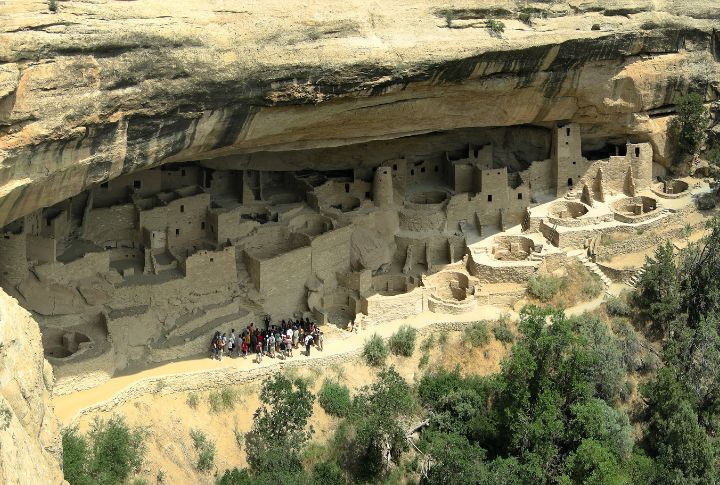
Some of the most astonishing ancient places in the U.S. don’t hide in museums or behind velvet ropes. They appear in quiet valleys and across vast grasslands, each with a story ready to surface once you look closely. So settle in and enjoy a journey through ruins that still know how to surprise people.
Poverty Point
Poverty Point is an ancient earthwork site in Louisiana built long before the pyramids. People shaped the land into six large ridges and several massive mounds, including Mound A, one of the biggest in North America. The impressive design shows how advanced this community was despite having no metal tools or animals for transport.
Cahokia Mounds
You wouldn’t guess it from a glance, but Illinois once hosted a city big enough to rival major European towns of the time. Its centerpiece, Monks Mound, rises as the largest prehistoric earthen structure on the continent. A nearby timber circle called Woodhenge also helped residents pinpoint key moments in the solar calendar.
Taos Pueblo
Taos Pueblo stands out because it never became a silent ruin—people still live in its thick adobe homes, carrying more than a thousand years of tradition into everyday life. That living history earned UNESCO recognition. Each year, the San Geronimo Feast Day brings the community together through dances and ceremonies that show how active the culture remains.
Moundville Archaeological Site
A vast stretch of grass in Alabama turns into something entirely different when you notice the Earth rising into carefully shaped platforms. Mississippian people lived here from about 1000 to 1450 CE and arranged twenty-nine mounds around a central plaza. The site’s museum also displays engraved copper plates and pottery that reveal the community’s skill.
Mesa Verde

Mesa Verde starts making sense only when you realize the cliffs themselves hold entire neighborhoods. The Ancestral Puebloans built their homes inside natural alcoves between 600 and 1300 CE, using the rock for shade and safety. Their largest community, Cliff Palace, included living spaces and kivas used for important gatherings.
Serpent Mound
Ohio pulls a surprise with a giant snake shape stretched across a hilltop, long enough to make you stop and stare. Its builders remain a mystery, as some experts attribute the construction to the Adena culture, while others argue that the Fort Ancient people built it. No other effigy mound on Earth still stands this large.
Casa Grande Ruins
The desert in Arizona suddenly feels less empty once you spot a four-story adobe building that the Hohokam people raised in the thirteenth century. Early Spanish visitors also called Casa Grande Ruins the Big House because of its enormous size. Its walls line up with the cardinal directions, and certain openings even mark specific sun and moon events throughout the year.
Montezuma Castle
It takes a second to realize the cluster of windows high in an Arizona cliff belongs to a five-story home. The Sinagua people built this twenty-room dwelling between 1100 and 1425 CE, taking advantage of the site’s elevation for safety and cooler temperatures. Early settlers later named it after the Aztec ruler Montezuma, even though he lived centuries later and had no connection to the site.
Chaco Canyon
Travelers reaching Chaco Canyon in New Mexico often feel like they’ve stepped into the heart of an ancient network, and they’re not wrong. The Ancestral Puebloans raised massive stone buildings here between 900 and 1150 CE, and straight desert roads lead directly to them. Many structures match solar and lunar moments with surprising precision.
Effigy Mounds
Some ancient sites reveal their secrets only after you change your perspective, and Effigy Mounds in Iowa fits that perfectly. More than 200 animal-shaped earthworks, built between 600 and 1200 CE, spread across the landscape. Many Native nations also regard the area as an important cultural place.

